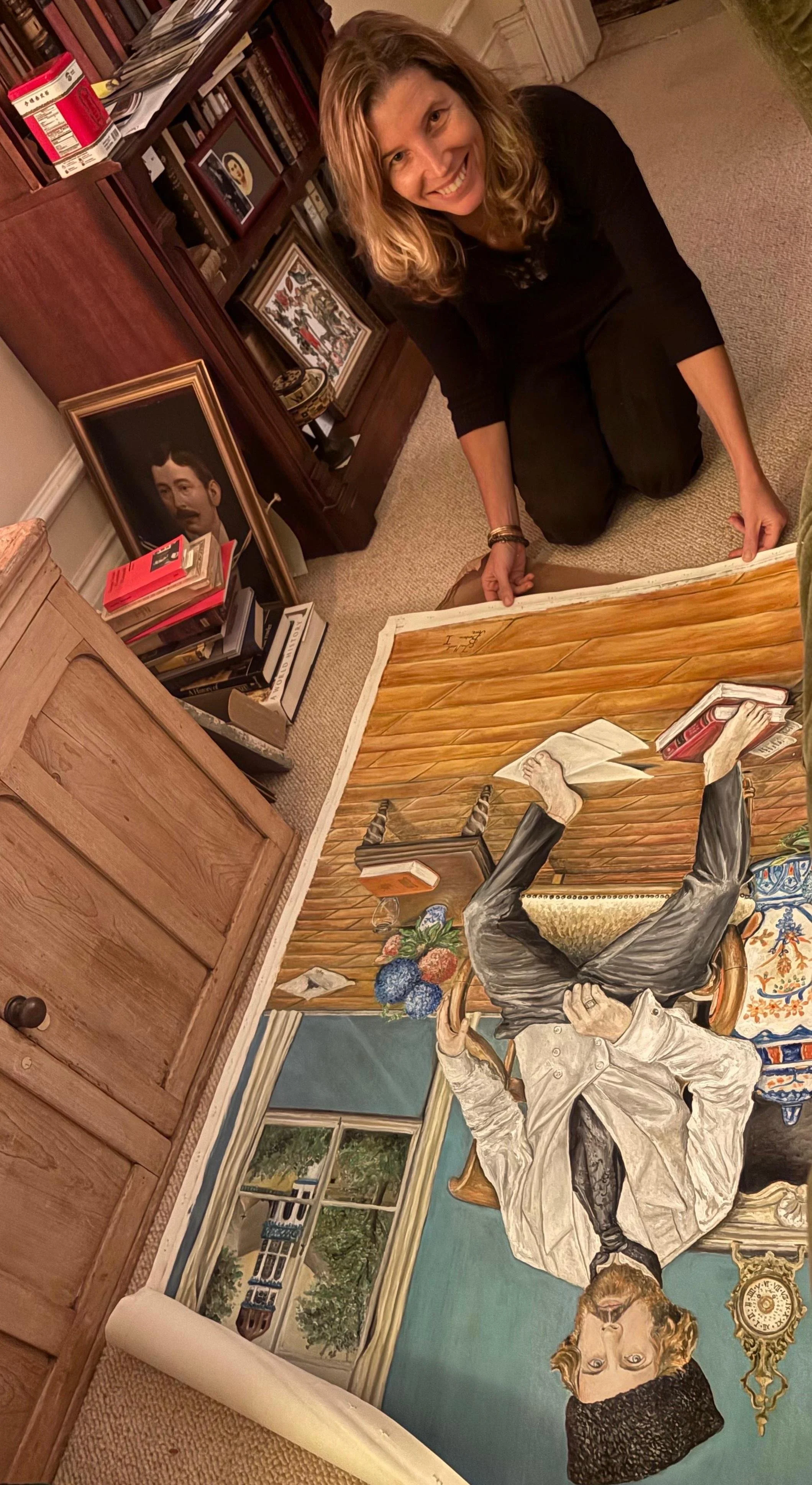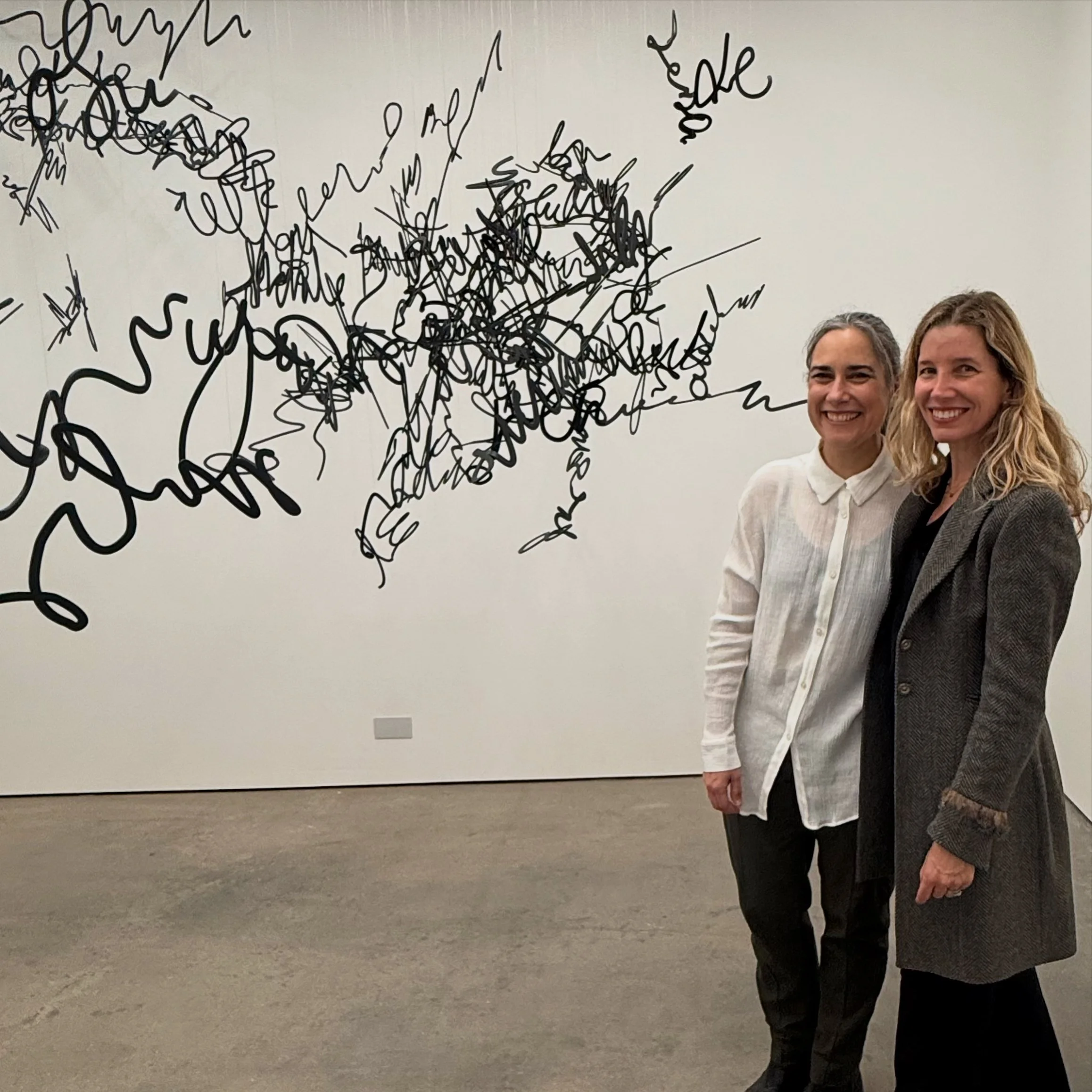Claudia Trosso: Building Bridges for Latin American Artists in the UK
This interview is part of the series "In the Making: Conversations on Latin American Art in the UK".
Research, Interviews and Writing by Raquel Gonzalez Eizmendiz
Curatorial & Editorial Direction by Gabriela Román González & Mónica Núñez
Claudia Trosso with the artwork of Peruvian artist José Manuel Barahona Pérez.
Claudia Trosso thinks about herself as a bridge-builder, a connector driven by curiosity, care, and the belief that art deserves visibility beyond borders.
A Peruvian communicator and art advisor based in London, Claudia has spent the past two decades championing Latin American visual artists in the UK. Whether through exhibitions in her flat, collaborations with galleries, or guided studio visits, her work sits at the intersection of advising, educating, and advocating. “I am not just trying to help sell art,” she says. “I am trying to open eyes, to create space for dialogue, for discovery, for connection.”
How did you first get involved with Latin American art in the UK?
It started back in 2007, when I began presenting to London works made by Peruvian visual artists. At the time, Latin American contemporary art was almost invisible here. People would hear “Peru” and think Machu Picchu. If they thought of Peruvian art, it was probably related to the words “ethnic” or “folkloric”. Then, I started organising small exhibitions, sometimes at home, and invited collectors and friends. It was very “do-it-yourself”, but it was about creating a bridge, bringing artists from Latin America into view.
Later, I realised there were also incredible Latin American artists already living here, not just Peruvians, but Venezuelans, Colombians, Brazilians. So, I expanded. I started visiting studios, connecting artists with collectors, curators, and eventually galleries. I was not thinking of the market at first, just building relationships.
How do you see your role these days, supporting Latin American artists in the UK?
Over time, I have come to understand my role more clearly: I am someone who connects artists to people, spaces, and opportunities. It could be a collector, a curator, an artistic residency, or simply someone who needs to see the work. After COVID, I stopped organising full exhibitions and focused more on organising visits to studios, to galleries, to shows where Latin American visual artists are featured.
Claudia Trosso at the studio of Peruvian visual artist Jose Bazo in London, June 2025.
Frequently, I take a group to see an exhibition by a Latin American artist, like Claudia Martínez Garay at Grimm Gallery, and realise that even Peruvians living here do not know who she is. That is a problem, and that is my main task. So, I bring people: artists, collectors, academics, and I open that door. My job is not just commercial. It is about education and presence.
Claudia Trosso with Peruvian artist Lizi Sánchez at the exhibition Polyphonies, Ames Yavuz, June 2025
I always say to artists: build your own public relations. Social media helps, yes. But also go to events. Apply to residencies. Present your work. It is not just about being talented, you have to move to be seen. I support artists in finding those next steps, from residencies to gallery introductions. I might tell someone, “This residency fits your work. Apply.” Or I will invite curators to visit a studio.
What role do you think residencies and foundations play for Latin American visual artists?
A huge one. I have been a patron of Gasworks for almost a decade, and I love what they do. They give artists the chance to leave their countries, be in London for a few months, meet curators, have studio visits, and present their work. That kind of exposure can change everything. I have seen artists like Patricia Domínguez and Fátima Rodrigo grow tremendously after doing residencies here.
I think supporting a residency can be more impactful than buying a single piece. You are investing in someone’s trajectory, not just their work.
What are some of the ongoing challenges you see for Latin American visual artists in the UK?
Visibility and positioning. Getting into a gallery is hard. Getting into a fair like Frieze is even harder and expensive. Most big galleries want artists who are already validated by institutions. But how do you get into those institutions without the gallery? It is circular.
Also, the market follows trends. Right now, for example, there is interest in indigenous or decolonial work. But if your practice does not fit that narrative, you might be overlooked, even if your work is incredible. So, artists sometimes feel they have to shape-shift to match what is “in”.
What motivates you to keep doing this work?
I love building bridges; that is how I have always felt it. And not just in the art field, I love building bridges in general. I enjoy connecting people. I am a communicator by training and a passionate lover of art. Coming from Latin America, I have seen the lack of opportunities. There is so much talent that has not had the chance to leave the region. So, if I can help someone gain visibility, connect with a curator, a gallery, or an opportunity, that alone gives me enormous satisfaction.
Claudia Trosso is an Italo-Peruvian Art Advisor for Latin American art based in London since 2002. She is the founder of Art in the Flat ( 2007), a home gallery dedicated to promote mainly Contemporary Peruvian Art. She is currently collaborating with galleries that exhibit Latin American visual artists in London.




